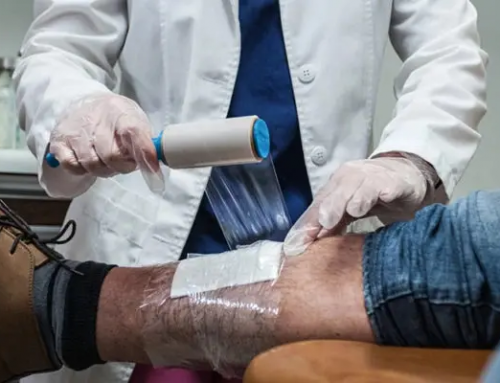The American Burn Association (ABA) estimates that roughly four-hundred fifty thousand (450,000) patients receive emergency room treatment for burns annually. This statistic does not even account for injuries handled in private clinics or medical offices, community health centers, and unreported cases at home.
IDENTIFYING THE SEVERITY OF BURNS
The “degree” or seriousness of a burn injury relates to how extensive damage is. Knowing the depth of the burn and the surface area of the damaged skin can help in identifying the severity of burn injuries.
Superficial or First-Degree Burns
First degree burns, also termed superficial burn injuries usually do not need medical treatment from a professional healthcare provider. It is a type of wound that involves the outer layer of the skin called epidermis. Characterized as the least serious kind of burn injury, it’s symptoms include swelling, pain, and redness.
Partial Thickness or Second-Degree Burns
A second degree or partial-thickness burn involves a deeper layer of the skin. Aside from affecting the outermost layer, there might be some damage to the second layer of the skin (known as the dermis). This type of injury may cause swelling, white or splotchy skin, blisters, and pain. The skin around the blisters may look weepy or wet and may occur from contact with a hot surface, oil, or grease.
Full-thickness or Third-Degree Burns
Full-thickness burns or third-degree burns cause damage to all layers of the skin. Sometimes, it even affects the underlying fat, as well as the muscles or bone. In some cases, people who suffer third-degree burns may not feel pain because the nerve endings may be affected or destroyed. Patients from a third-degree burn may also experience carbon monoxide poisoning, difficulty breathing, and other symptoms of toxic smoke inhalation.
The skin color may vary from pale pink, red, tan, white, black, brown, or yellow. The skin may appear dry or leathery and may also swell. This injury is the most serious among other types of burns, and it requires immediate medical treatment or 911.
FIRST AID TREATMENT FOR BURNS
Ice application is not recommended as an immediate treatment for burn injuries. Burns should not be treated with ice because it can cause frostbite, decreased circulation, and make the injury worse.
Superficial or First-Degree Burns
If you think that you have first-degree burn injuries, start immediate treatment. Soak the affected area in cold water (not freezing) for five minutes to pull the heat away from the skin. Then, you can use petroleum jelly or antibiotic ointment to keep the area moist. After that, wrap it loosely using a gauze. Keep the area from getting wet due to spilled drinks or food, and away from dirt.
For extensive injuries, immediately seek professional help to prevent infection. Home interventions will only delay you from receiving proper treatment and medical care for your burn.
Partial Thickness or Second-Degree Burns
For partial thickness burn that is less than three inches, you can perform first aid by holding the injured part under cold water for fifteen minutes. Cooling the burn prevents further damage in the skin and underlying tissues.
If the burned area is larger than three inches, or if the areas affected include the face, hands, major joints, feet, groin, and buttocks, you need to seek medical treatment as soon as possible.
Full-thickness or Third-Degree Burns
Anyone who is suffering from a full-thickness or third-degree burn should go to the hospital right away. Unlike other types of burns, third-degree burns are more serious. Also, this type of burns should not be soaked in cold water.
MEDICAL TREATMENT FOR BURNS
After receiving first aid treatment for major burns, your treatment options may include one or more interventions listed below:
• Tetanus shot
If you have not had a tetanus shot in the past five years, your doctor may recommend a tetanus booster shot.
• Daily wound care
The focus in the management of burns is the prevention of infection. To avoid bacteria from entering the wound, your care team will perform daily wound care. He or she will flush (clean) the burns gently with normal saline or sterile water, and cover them with appropriate wound dressing.
On the other hand, if you are sent home and advised to clean the wound daily, rinse it with sterile water. Do not use soap or scented products to remove dirt or wound seepage. Daily cleansing the wounds will prevent infection and speed up the healing process.
• Daily wound dressing
After each wound care, your healthcare provider will use a wet-to-dry dressing to wrap and protect the area. This type of wound dressing uses moist gauze with petroleum jelly to prevent the gauze from sticking to the open wounds. A non-stick pad may be placed in between the moist pad and dry gauze to control wound seepage and keep the wound hydrated. This intervention will stimulate the tissue from healing and prepare the open wound to close.
• Pain medications
You may need pain medications because burn injuries can be incredibly painful. It can limit your ability to move, function, concentrate on daily activities, and fall or stay asleep.
• Medications that fight infection
People with severe burns may require antibiotic treatment, especially if there is an increased risk for an infection.
Sealskin Medical Wrap and Treatment of Burns
Most burn injuries heal within two to three weeks. They usually can be treated and managed at home. After appropriate wound assessment, first aid care, and medications, you may be able to control pain and prevent infection. However, you may need more than just moist pads, non-stick dressing, and dry gauze to keep burn wounds clean and infection-free.
SealSkin Transparent Medical Wraps can help you secure, protect, and reduce the discomfort of the healing process for burns and wounds. It will help you heal from burns and still live your life. For instance, you can take a bath or shower without having to worry about keeping your wound dressing or bandage dry.
SealSkin can also cling to the body properly, including the most-difficult-to-protect parts and contours of the body. It will help keep liquid spills, dirt, and bacteria at bay. It is super-flexible and can adhere without using medical tapes or any adhesives.
And since burn injuries are vulnerable to infection, keeping them protected and sealed off with SealSkin medical wrap can be advantageous for a successful recovery.
This article is informational only and not medical advice. Please consult your physician to determine the severity and treatment necessary for any wound or burn.






